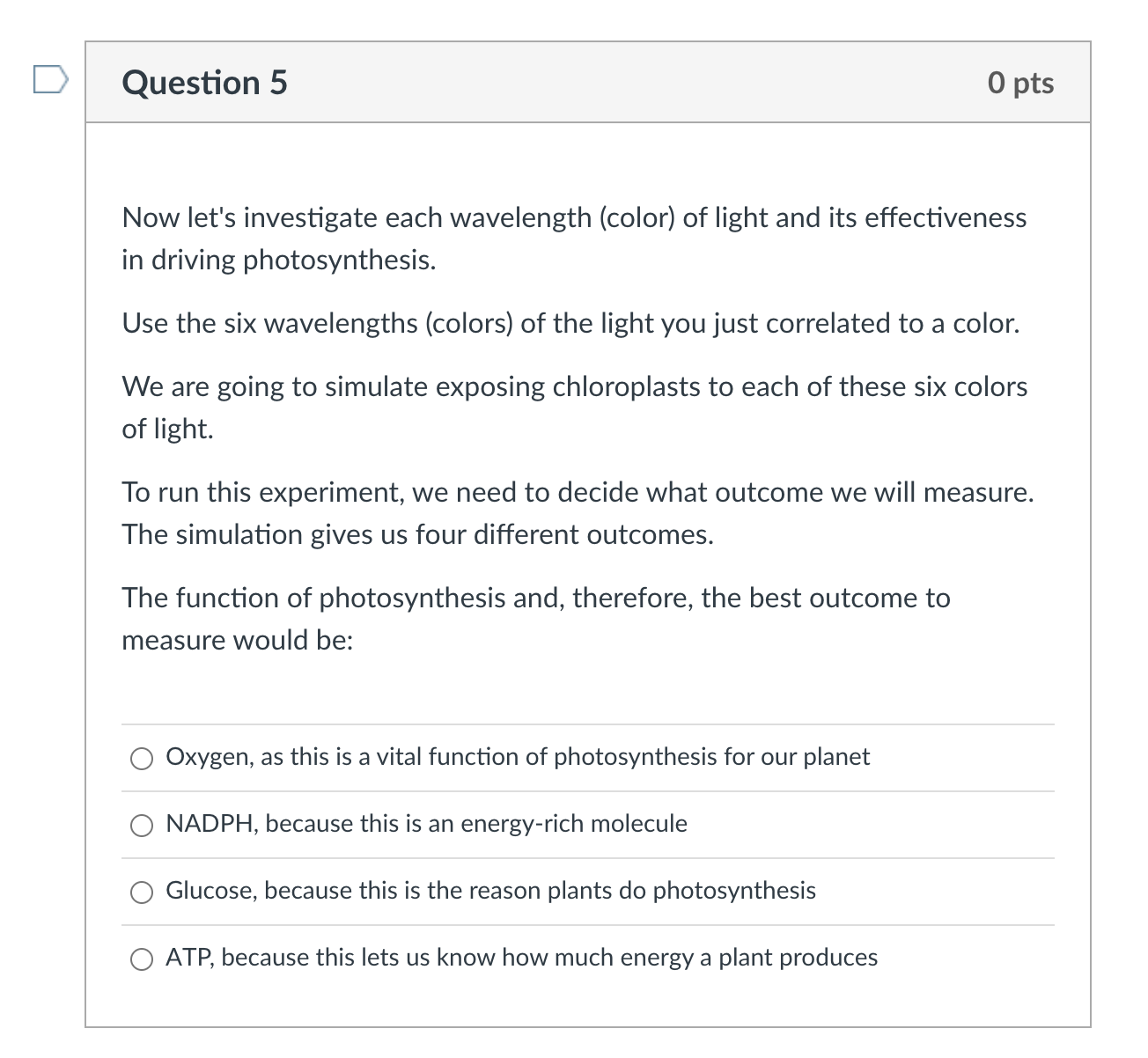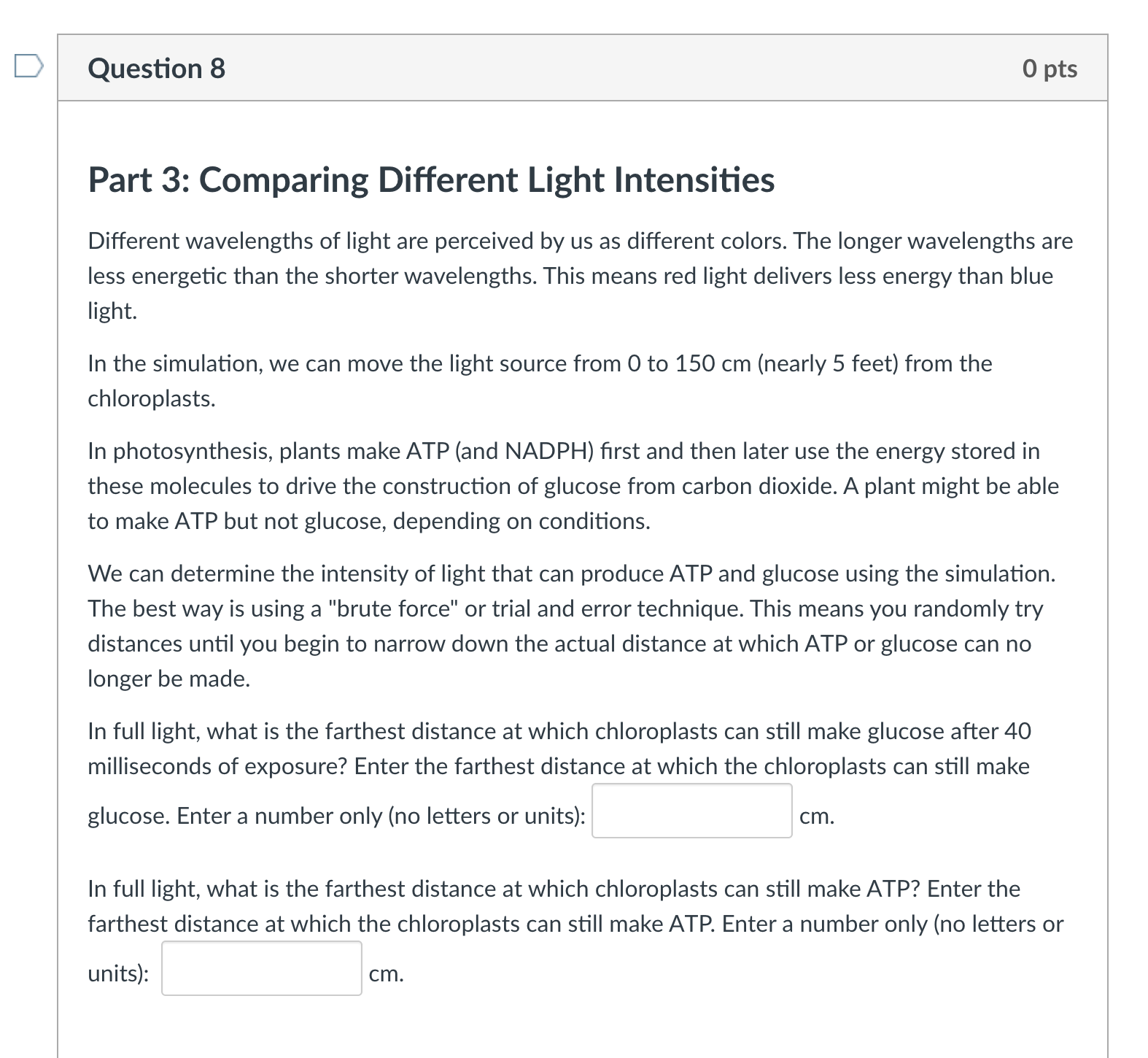Home /
Expert Answers /
Biology /
please-answer-both-questions-now-let-39-s-investigate-each-wavelength-color-of-light-and-its-effec-pa804
(Solved): Please answer both questions (: Now let's investigate each wavelength (color) of light and its effec ...


Please answer both questions (:
Now let's investigate each wavelength (color) of light and its effectiveness in driving photosynthesis. Use the six wavelengths (colors) of the light you just correlated to a color. We are going to simulate exposing chloroplasts to each of these six colors of light. To run this experiment, we need to decide what outcome we will measure. The simulation gives us four different outcomes. The function of photosynthesis and, therefore, the best outcome to measure would be: Oxygen, as this is a vital function of photosynthesis for our planet NADPH, because this is an energy-rich molecule Glucose, because this is the reason plants do photosynthesis ATP, because this lets us know how much energy a plant produces
Different wavelengths of light are perceived by us as different colors. The longer wavelengths are less energetic than the shorter wavelengths. This means red light delivers less energy than blue light. In the simulation, we can move the light source from 0 to (nearly 5 feet) from the chloroplasts. In photosynthesis, plants make ATP (and NADPH) first and then later use the energy stored in these molecules to drive the construction of glucose from carbon dioxide. A plant might be able to make ATP but not glucose, depending on conditions. We can determine the intensity of light that can produce ATP and glucose using the simulation. The best way is using a "brute force" or trial and error technique. This means you randomly try distances until you begin to narrow down the actual distance at which ATP or glucose can no longer be made. In full light, what is the farthest distance at which chloroplasts can still make glucose after 40 milliseconds of exposure? Enter the farthest distance at which the chloroplasts can still make glucose. Enter a number only (no letters or units): . In full light, what is the farthest distance at which chloroplasts can still make ATP? Enter the farthest distance at which the chloroplasts can still make ATP. Enter a number only (no letters or units): .
Expert Answer
Question No 5.The correct answer is (c) Glucose because glucose is the primary product of photosynth...